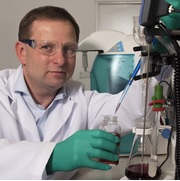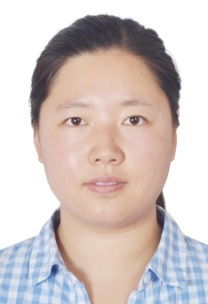Day 3 :
Keynote Forum
Dr. Borja Sepulveda
ICN2, Spain
Keynote: Multifunctional magneto-plasmonic nanostructures for nanotherapies and imaging

Biography:
Borja Sepulveda received his PhD degree in Physics from the Complutense University of Madrid in 2005. His Post-graduate research was carried out at the Microelectronics Institute of Madrid (CSIC). In 2006 he started a two years Postoctoral stay at the Bionanophotonics and Bioimaging group in Chalmers University of Technology (Göteborg, Sweden). In 2008 he joined the Catalan Institute of Nanoscience and Nanotechnology (ICN2) of Barcelona as Research Fellow, where he got a Ramon y Cajal grant in 2009. From 2012, he holds a permanent research position at the ICN2. During his scientific career, he has acquired a highly multidisciplinary experience, focused on the development of photonic and magnetic nanostructures for biomedical and environmental control applications. In particular, he has acquired experience in very diverse fields such as: photonics and nano-photonics, magneto-optics and magneto-plasmonics, nano-fabrication, surface chemistry and microfluidics. He is co-author of more than 50 publications, and the first author of three patents.
Abstract:
Magnetic nanostructures have demonstrated their enormous potential as biomedical nanodevices with both therapeutic and diagnostic activities. One of the most promising application is their use as heat mediators for magnetic fluid hyperthermia, where the nanostructures dissipate heat in the presence of alternating magnetic fields. Similarly, plasmonic nanostructures also exhibit encouraging properties in plasmonic absorption hyperthermia, where plasmonic nanostructures generate heat when irradiated with laser light. Thus, combining both properties in a single entity, i.e., magnetoplasmonic nanostructures, may open new avenues in the design of biomedical nanoplatfoms. Here we present two approaches for the design of magnetoplasmonic nanostructures for biomedical applications using bottom-up and top-down approaches. Magnetic-plasmonic nanoparticles of different sizes and morphologies based on Fe3O4 and Au were synthesized by thermal decomposition (bottom-up). This method allows the synthesis of particles with high crystallinity, defined shape and narrow size distribution. Colloidal lithography (top-down) was used to develop magnetoplasmonic nanodomes based on Au and Fe. Both types of structures exhibit appealing magnetic properties at room temperature and clear plasmonic resonances. Hyperthermia measurements show that these nanostructures can be used as heat mediators in magnetic and plasmonic modes. Moreover, the combination or magnetic and plasmonic moieties confers the system additional functionalities like the capability to act as contrast agent for X-Ray Computed Tomography and optical imaging (Au) or as magnetic resonance imaging, MRI (Fe and Fe3O4). This combination of properties paves the way to use these hybrid nanostructures as potential theranostic (therapy-diagnostic) agents.
Keynote Forum
Jordi Arbiol
ICREA & Catalan Institute of Nanoscience and Nanotechnology (ICN2), CSIC & BIST, Spain
Keynote: Free-standing nanostructures at atomic scale: from growth mechanisms to local properties at the nanoscale

Biography:
Jordi Arbiol graduated in Physics at Universitat de Barcelona (UB) in 1997, where he also obtained his PhD (European Doctorate and PhD Extraordinary Award) in 2001 in the field of transmission electron microscopy (TEM) applied to nanostructured materials. He was Assistant Professor at UB. From 2009 to 2015, he was Group Leader at Institut de Ciència de Materials de Barcelona, ICMAB-CSIC. He is President of the Spanish Microscopy Society (SME), was the Vice-President from 2013 to 2017. Since 2015 he is the Leader of the Group of Advanced Electron Nanoscopy at Institut Català de Nanociència i Nanotecnologia (ICN2), CSIC and The Barcelona Institute of Science and Technology (BIST). He has been awarded with the 2014 EMS Outstanding Paper Award, the EU40 Materials Prize 2014 (E-MRS), listed in the Top 40 under 40 Power List (2014) by The Analytical Scientist and the PhD Extraordinary Award in 2001 (UB).
Abstract:
Technology at the nanoscale has become one of the main challenges in science as new physical effects appear and can be modulated at will. Superconductors, materials for spintronics, electronics, optoelectronics, sensing, energy applications and new generations of functionalized materials are taking advantage of the low dimensionality, improving their properties and opening a new range of applications. As developments in materials science are pushing to the size limits of physics and chemistry, there is a critical need for understanding the origin of these unique physical properties (optical and electronic) and relate them to the changes originated at the atomic scale, e.g.: linked to changes in (electronic) structure of the material. In the present work, I will show how combining advanced electron microscopy imaging with electron spectroscopy, as well as cathodoluminescence in an aberration corrected STEM will allow us to probe the elemental composition and electronic structure simultaneously with the optical properties in unprecedented spatial detail. The talk will focus on several examples in advanced nanomaterials for optical, plasmonic and energy applications. In this way the latest results obtained by my group on direct Visualizing and modeling materials at atomic scale will help to understand their growth mechanisms (sometimes complex) and also correlate their physical properties (electronic and photonic) at sub-nanometer with their atomic scale structure. The examples will cover a wide range of nanomaterials: quantum structures self-assembled in a nanowire: quantum wires (1D) and quantum dots (0D) and other complex nanowire-like morphologies for photonic and energy applications (LEDs, lasers, quantum computing, single photon emitters, water splitting cells, batteries), nanomembranes and 2D sheets; as well as metal multiwall nanoboxes and nanoframes for 3D plasmonics.
Keynote Forum
Heiko Jacobs
Nanotechnology group TU Iimenau, Germany
Keynote: Localized Programmable Gas Phase Electrodeposition; A new Transport Process with Applications Ranging from the Deposition of Functional Nanostructures to the Collection and Identification of Airborne Species for Sensing Applications

Biography:
Heiko O. Jacobs has his expertise in nanotechnology and heterogeneous integration of electronics over different length scales. His new deposition and assembling strategies established new integration strategies in solid, liquid and gas phase, which create new pathways for improving assembly techniques. He has built the ideas for this research during his Postdoc time at Whitesides in Harvard (99-01) and developed them during his time as a professor in Minnesota. Nowadays, these ideas are used in applications based on Nanoxerography, Gas Phase Electrodeposition and Fluidic Self-Assembly.
Abstract:
This talk describes a recently discovered transport approach that enables the localized deposition and collection of microscopic, nanoscopic, and molecular sized particles at high rates and in 3D. The localized gas phase deposition and collection process is based on the interplay of high mobility gas ions and lower mobility nanoparticles and molecules in the presence of a pre-patterned substrate. The first half of the talk will discuss an application where the approach is used to grow functional 3D nanostructures which are composed of metallic and semiconducting particles, including nanostructured electrodes for bulk heterojunction photovoltaics, multifunctional nanomaterial based sensors, plasmonic structures, and nanowire interconnects.[1,2] The second half will discuss an extension to an application in the field of sensing of airborn analytes where the method is applied to locally collect molecules at collection rates that exceed diffusion-only-transport.[3,4,5] Specifically we will demonstrate localized collection of analytes over a wide range of molecular weights ranging from 3×10^17 to 1×10^2 Daltons, including (i) microscopic analyte particles, (ii) inorganic nanoparticles, all the way down to (iii) small organic molecules. Implications: In all cases we find that the collection rate is several orders of magnitudes higher than in the case where our advanced collection schemes is turned off and where collection is driven by diffusion only. The collection scheme is integrated on an existing surface-enhanced Raman spectroscopy based sensor. In terms of response time, the process is able to detect analytes at 9 parts per million within 1 second. As a comparison, 1 hour is required to reach the same signal level when diffusion-only-transport is used.
Keynote Forum
Valery Pavlov
CIC BiomaGUNE, Spain
Keynote: Effect of biocatalytic reactions on growth of semiconductor nanoparticles: Application to biosensing

Biography:
V. Pavlov obtained his PhD degree in Chemical Engineering in January 2005 from the University Rovira I Virgili (Spain). He worked in the Hebrew University of Jerusalem (Israel) in the group of professor Itamar Willner as a postdoctoral researcher. Since October he continued his postdoctoral study at the Chemistry Department of the University of Heidelberg (Germany). In February 2007 he joined the new research institute CIC BiomaGUNE in San Sebastian as a group leader. His research interests include enzymatic generation of metal and semiconductor nanoparticles, production of new recombinant mutated enzymes, and optical bioanalytical assays.
Abstract:
Our laboratory discovered for the first time that products of enzymatic reactions are able to modulate growth of semiconductor fluorescent CdS nanoparticles (NPs) grown in situ. Emission spectra of these NPs depend on their size and capping agents which stabilize them in aqueous solutions. We found out experimental conditions under which the growth of CdS NPs is very rapid and takes 10 min or less. The biocatalytic growth of CdS NPs has been applied to optical determination of enzymatic activities of enzymes such as acetylcholine esterase,1 horseradish peroxidase,2 glucose oxidase3 etc. We also reported novel sensitive selective electrochemical assays based on generation of CdS NPs in situ which is modulated by affinity interactions and oxidative activity of metal ions. For example, our immunoassay employs antibody-alkaline phosphatase conjugate which catalyzes generation of CdS detected with disposable carbon electrodes premodified with the electroconductive polymer Os-PVP.4 We demonstrated a new electrochemical assay employing microbead linked enzymatic generation of CdS QDs (Microbead QD-ELISA)5 for cancer marker superoxide dismutase. In the presence of this analyte, CdS NPs were formed on the surface of microbeads modified with antibodies for superoxide dismutase (Fugure 1). Formed in situ CdS NPs were followed with fluorescence spectroscopy, microscopy, and square-wave voltammetry. Our latest assays use cysteine (CSH) which stabilizes CdS NPs growing during the biorecognition event in aqueous buffered solutions. Oxidation of CSH with hydrogen peroxide (H2O2) results in formation of cystine (CSSC) which does not stabilize CdS NPs. A number of chemical and biochemical reactions involving copper ions, glucose6 and methanol yield hydrogen peroxide, modulating the quantity of CdS NPs produced in situ.
- Bio-Nanomaterials and Biomedical Devices, Applications | Nanomaterials- Production, Synthesis and Processing | Nanoelectronics and Nanometrology | Nanotechnology & Energy | Computation, Simulation & Modeling of Nanostructures, Nano Systems & Devices | Nanomedicine & Nanobiotechnology, Nanoparticles
Location: Frankfurt

Chair
Liqiu “Rick” Wang
The University of Hong Kong, Hongkong
Session Introduction
Wolfgang Ensinger
Technische Universitaet Darmstadt, Germany
Title: Biomimetic ion conducting nanopores in polymeric foils as bio-molecular chemical sensors: The inapo project
Time : 12:30-13:00

Biography:
Wolfgang Ensinger studied Chemistry and Physics at the Universities in Karlsruhe and Heidelberg in Germany. He received his PhD in 1988 from Heidelberg University. Thereafter, he was a Guest Researcher at Osaka National Research Institute in Japan, Lecturer at Institute of Solid State Physics at University Augsburg and Professor of Analytical and Nuclear Chemistry at University of Marburg. Since 2004, he is a Full Professor of Material Analysis at Technical University of Darmstadt in Germany. His research topics include formation of thin films and nanostructures, including nanochannels, nanowires and nanotubes. He has authored/co-authored more than 300 peer-reviewed scientific publications.
Abstract:
The iNAPO-project is run by a group of materials scientists, biologists, chemists, physicist and electrical engineers. One of the main purposes is the development of biomimetic (bio)molecular sensors based on ion conducting nanopores in polymer foils. The basic principles of fabrication and working mechanism of such a nanosensor are described. PET foils are irradiated with a highly energetic single ion of a heavy element at the particle accelerator at GSI Helmholtz-Center in Darmstadt. The ion damage zone in the polymer is chemically etched into a conical pore, with the small aperture being in the nm range. The nanopore walls are functionalized with a biorecognition unit, i.e. a molecule which specifically reacts with a molecule to be analysed. In an electrochemical cell, the foil acts as separation membrane. The electrolyte current flowing through it is measured as a function of the applied potential. In the presence of specific analyte molecules, which bioconjugate with the biorecognition unit, these ionic currents are changed. Thus, a highly sensitive nanosensor is available. The preparation and working principle of the nanosensor is described. As an example, results on protein sensing are shown. In Fig. 1, the quantitative measurement of the protein Concanavalin A that specifically bioconjugates with mannose is depicted. The concept of the functionalized ion conducting nanopores can be applied to a large number of biorecognition couples. Within the project iNAPO, the potential of this technique will be further explored. In a step further, it is planned to embed protein-based nanopores with even better selectivity into polymer membranes. Eventually, the membranes will be incorporated in electronic micro sensing devices thus creating a new type of (bio)molecular sensor. The development is supported by analytical studies based on NMR and by theoretical and simulation studies.
Wolfgang Ensinger
Technische Universitaet Darmstadt, Germany
Title: Biomimetic ion conducting nanopores in polymeric foils as bio-molecular chemical sensors: The inapo project
Time : 12:30-13:00

Biography:
Wolfgang Ensinger studied Chemistry and Physics at the Universities in Karlsruhe and Heidelberg in Germany. He received his PhD in 1988 from Heidelberg University. Thereafter, he was a Guest Researcher at Osaka National Research Institute in Japan, Lecturer at Institute of Solid State Physics at University Augsburg and Professor of Analytical and Nuclear Chemistry at University of Marburg. Since 2004, he is a Full Professor of Material Analysis at Technical University of Darmstadt in Germany. His research topics include formation of thin films and nanostructures, including nanochannels, nanowires and nanotubes. He has authored/co-authored more than 300 peer-reviewed scientific publications.
Abstract:
The iNAPO-project is run by a group of materials scientists, biologists, chemists, physicist and electrical engineers. One of the main purposes is the development of biomimetic (bio)molecular sensors based on ion conducting nanopores in polymer foils. The basic principles of fabrication and working mechanism of such a nanosensor are described. PET foils are irradiated with a highly energetic single ion of a heavy element at the particle accelerator at GSI Helmholtz-Center in Darmstadt. The ion damage zone in the polymer is chemically etched into a conical pore, with the small aperture being in the nm range. The nanopore walls are functionalized with a biorecognition unit, i.e. a molecule which specifically reacts with a molecule to be analysed. In an electrochemical cell, the foil acts as separation membrane. The electrolyte current flowing through it is measured as a function of the applied potential. In the presence of specific analyte molecules, which bioconjugate with the biorecognition unit, these ionic currents are changed. Thus, a highly sensitive nanosensor is available. The preparation and working principle of the nanosensor is described. As an example, results on protein sensing are shown. In Fig. 1, the quantitative measurement of the protein Concanavalin A that specifically bioconjugates with mannose is depicted. The concept of the functionalized ion conducting nanopores can be applied to a large number of biorecognition couples. Within the project iNAPO, the potential of this technique will be further explored. In a step further, it is planned to embed protein-based nanopores with even better selectivity into polymer membranes. Eventually, the membranes will be incorporated in electronic micro sensing devices thus creating a new type of (bio)molecular sensor. The development is supported by analytical studies based on NMR and by theoretical and simulation studies.
Riny Yolandha Parapat
Itenas Bandung-TU, Berlin
Title: Hybrid nanoparticles as theranostic tool: photo-thermal treatment and MRI imaging

Biography:
Riny Yolandha Parapat has her expertise in synthesis of nanocrystal via microemulsions technique. Her great passion is to create and develop nanomaterials especially in the field of catalysis. Because she is also concerned about the environment, her research is now heading to the field of green synthesis and biofuel production. Her advanced knowledge and experience in microemulsions making her able to synthesize and design the super active nanocatalysts in a greener way. She has discovered a new method to synthesize highly active supported nanocatalysts, so-called thermo-destabilization of microemulsions. Not only is she active in doing research, she is also a Lecturer in the course of kinetic and catalysis, experimental design, process control, and plant design.
Abstract:
Designed nanomaterials are still very alluring in various fields including in catalysis for they have outstanding properties. However, along with the concern of global safety and environment, the fabricating of designed nanomaterial is progressing to in a greener way. Among the nanoparticle synthesis strategies, microemulsion technique is one of the most facile yet ingenious methods because of its ability to tune the size and the shape of the nanoparticles by controlling the parameters such as metal concentration, kind of reducing agent and its concentration, composition surfactant and/or co-surfactant, temperature, etc. Previously, we produced well dispersed NPs supported on the different support materials by using our method, namely thermo-destabilization of microemulsion. Here, we improve the synthesis route by using various natural reductants for the preparation of supported Ag, Pt, Pd, Ru nanoparticles. The natural reductants that are used in this work are green tea leaf, coffee beans, grape seed and peppermint leaves. The higher the total phenol content, the stronger the reducing power of the antioxidant will be. It has been reported that strong reducing agent will cause fast nucleation process, thus promoting smaller particle size. Therefore, the finer branches of the Pt dendrites produced by using grape seed are a result of the fast nucleation process. Because all the used natural reductants are classified as the weak reductant, which can control the shape kinetically, therefore all the NPs have anisotropic structures. However, from Fig. 1 we can see that applying the same natural reductant for other kinds of metal will also produce different thickness of the branches. In case of Ru NPs, when using coffee as reductant, there is a kind of shell that covers the particles. Adding Cu precursor to the Ru solution at room temperature creates another NPs structure which looks like nanoflakes. After applying our green nanocatalysts in greener catalysis such as levulinic acid hydrogenation, we found that our nanocatalysts are more active compared to those which were prepared with other methods.
WANG Lin
China University of Geosciences, China
Title: Charge transport through supramolecular junctions via quadruple hydrogen bonds

Biography:
Wang Lin received her BE from the Department of Chemistry at Jilin University in 2011, and the PhD Degree from Institute of Chemistry, Chinese Academy of Sciences (ICCAS). She is currently an Assistant Professor in Department of Material Science and Engineering, China University of Geosciences, Beijing, China. Her research interest is in the field of molecular electronics, with specific focus on the charge transport through self-assembled single molecular devices.
Abstract:
Understanding the electron transport between single molecules connected through self-assembly interaction is of great importance for molecular electronics. In this presentation, we report the electron transport investigation of an assembled supramolecular junction bridged by quadruple hydrogen bonds. A series of self-complementary ureido pyrimidine-dione (UPy) derivatives modified with different aurophilic anchoring groups were synthesized. Their electron transport properties through the quadruple hydrogen bonds in apolar solvent were probed employing the scanning tunneling microscopy break junction (STMBJ) technique. In comparison with the analogues of pyridine and amine, a molecular dimer with a thiol anchor displays the highest conductance value and largest junction formation probability, with a statistical conductance value that approaches 10-3 G0. The 1H NMR spectra and control experiments verify the formation of quadruple hydrogen bonds, which can be effectively modulated by the polarity of the solvent environment. This work suggests that a supramolecular assembly could also act as a highly conductive molecular electronics device, which offers a new design strategy and further extends the material library for future molecular electronic devices.
Jose F. Fernandez
Instituto de Cerámica y Vidrio, CSIC, Spain
Title: Beyond nanoparticles: Active interfaces for safe-by-design nanotechnology
Time : 14:40-15:10

Biography:
José F Fernández is Professor at the Electroceramics Department of the Institute of Ceramics and Glass, CSIC, Madrid, Spain. He is the Leader of the Smart System Group (CSS). He has extensive experience in the ceramic processing of functional ceramics whose properties are based on complex micro and nanostructures. Research activities have been crystallized in the development of several concepts in functional ceramics and nanotechnology such as surface modification of ceramic particles; Grain boundary engineering in semiconductor ceramics; Sintering of lead-free piezoceramics; Confocal Raman Microscopy of Ceramics; Proximity effects at the nanoscale; Dry nanodispersion of metal oxides; Functionalization of traditional ceramics through nanotechnology; and unusual properties in nanostructured ceramics. His interests are focused on the development of advanced ceramics to integrate in smart systems, involving actions of transfer of knowledge towards the industrial sector.
Abstract:
Beyond the advantages of nanoparticles, one of the priorities is to avoid potential adverse effects related to their nanotoxicity. There are different examples of how new and surprising functional properties are produced by the control of interfaces between dissimilar materials at the nanoscale. The existence of interfaces in nanocomposite materials in which the accumulation of electric charge occurs to dissimilar crystal structures allows developing the concept of active interface. Such active interfaces tailor the performance of the nanomaterial. The nanostructured nature allows preserving the advantages of the nanoscale avoiding the disadvantages of the same. From the point of view of toxicity, the nanostructured material behaves like a micromaterial. The nanostructure safe-by-design materials are engineering materials that allows moving to massive or industrial applications overcoming the technological barriers that are insurmountable in many cases. In this presentation relevant examples of how the engineered active interface behaves: 1) Isolated physical antimicrobial effect based on Schottky barriers of ZnO. The wide spectrum antimicrobial effect is demonstrated in single domain of rotated stacked nanoplatelets aligned in the (001) wurzite direction of the semiconductor. 2) Effective decoupling of thermal and electrical properties in thermoelectric composites based Skutterudite materials. The presence of electrical charge at the metal/oxide interface is on the origin of thermoelectric figure of merit enhancement. 3) UV blocking in TiO2 modified with ZnO by sol-gel. There is a synergism to increase absorption of UV-light and in addition a decrease of free radical formation occurs because of the suppression of electrons and holes pairs due to their recombination at the TiO2-ZnO interfaces. 4) Reversible domain switching by polarized light of highly charged ferroelectric 90º domain in charge. This light-matter coupling is modulated by an internal strain gradient within each domain, which is observed using in situ Confocal Raman microscopy (CRM).
Carmine Antonio Perroni
University “Federico IIâ€, Italy
Title: Thermoelectric efficiency of molecular junctions
Time : 15:10-15:40

Biography:
Carmine Antonio Perroni has expertise in many-body physics, linear and non-linear transport properties, quantum, topological and correlated states of matter.
Abstract:
Theoretical results in the coherent regime are discussed considering in particular a reference simple model with one electronic level and one vibrational mode in order to provide the relevant orders of magnitude for the thermoelectric properties. Moreover, we analyze the effects of molecular many-body interactions, such as electron-vibration couplings, which typically tend to reduce the efficiency. Indeed, the electron–vibration interaction can enhance both phonon and electron thermal conductance, and it can reduce not only the charge conductance, but also the thermopower. For prototype fullerene junctions, we focus on the results obtained within a non-equilibrium adiabatic approach which includes a strong Coulomb repulsion and applies to the self-consistent calculation of electron and phonon transport properties of massive molecules within the Coulomb blockade regime. In particular, the effect of the strong electron–electron interactions provides a peculiar double-peak structure to the thermopower versus charge conductance curve. Within the regime of weak to intermediate electron–vibration and vibration–lead phonon coupling, the peak values of the thermoelectric figure of merit are slightly less than unity, and the maximal efficiency of the junction can reach values slightly less than half of the Carnot limit for large temperature differences between the leads. Since a fine tuning of many parameters and coupling strengths is required to optimize the thermoelectric conversion in molecular junctions, new theoretically proposed set-ups are mentioned providing the new research directions in the field of molecular thermoelectricity.
Grzegorz Celichowski
University of Lodz, Poland
Title: The role of tannic acid and sodium citrate in the synthesis of silver nanoparticles for biomedical applications

Biography:
Grzegorz Celichowski is a Faculty Member in the Department of Materials Technology and Chemistry and involved in nanoparticles synthesis, characterisation and modification, especially for biomedical applications. His personal specialization is focused on methods of chemical synthesis and functionalization of metallic nanostructures and their characterization by spectroscopic methods. In addition to nanoparticles, he is also interested in synthesis and application of silver nanowires as textile materials modifiers for obtaining biologically and electricity active multifunctional materials.
Abstract:
We describe herein the significance of a sodium citrate and tannic acid mixture in the synthesis of spherical silver nanoparticles (AgNPs). Monodisperse AgNPs were synthesized via reduction of silver nitrate using a mixture of two chemical agents: sodium citrate and tannic acid. The shape, size and size distribution of silver particles were determined by UV–Vis spectroscopy, Dynamic Light Scattering (DLS) and Scanning Transmission Electron Microscopy (STEM). Special attention is given to understanding and experimentally confirming the exact role of the reagents (sodium citrate and tannic acid present in the reaction mixture) in AgNP synthesis. The oxidation and reduction potentials of silver, tannic acid and sodium citrate in their mixtures were determined using cyclic voltammetry. Possible structures of tannic acid and its adducts with citric acid were investigated in aqueous solution by performing computer simulations in conjunction with the semiempirical PM7 method. The lowest energy structures found from the preliminary conformational search are shown, and the strength of the interaction between the two molecules was calculated. The compounds present on the surface of the AgNPs were identified using FT-IR spectroscopy, and the results are compared with the IR spectrum of tannic acid theoretically calculated using PM6 and PM7 methods. The obtained results clearly indicate that the combined use of sodium citrate and tannic acid produces monodisperse spherical AgNPs, as it allows control of the nucleation, growth and stabilization of the synthesis process.
- Nanotechnology: Environmental effects and Industrial safety | Nanotechnology & Energy | Nanomedicine & Nanobiotechnology,Nanoparticles | Nanomaterials- production, synthesis and processing
Location: Frankfurt

Chair
Christophe A serra
University of Strasbourg, France
Session Introduction
Syed Hadi Hasan
Indian Institute of Technology(BHU), India
Title: Removal of fluoride from water using composite of GO: Optimization of process variables through RSM

Biography:
Syed Hadi Hasan is a full time Professor in the Department of Chemistry, Indian Institute of Technology (BHU), Varanasi, India. He has guided 6 PhDs and 20 MTech dissertations and published approximately 100 papers in international journals. He has also published several book chapters and monographs and delivered talks in many national and international conferences. He has expertise in the field of removal of heavy metals from water, Nanotechnology, Enzyme technology, colorimetric sensing of heavy metals.
Abstract:
Although, the presence of fluoride in the drinking water under a certain limit (<1 mg/L) is beneficial for normal human health, fluoride concentration above 1 mg/L in drinking water can cause deleterious effects leading to dental and skeletal fluorosis, brittle bones, osteoporosis and arthritis. Therefore the removal of excess fluoride from drinking water is a matter of scientific concern. In connection to this, the potential use of rGO/ZrO2 nanocomposite for the removal of fluoride from water was investigated. The rGO/ZrO2 nanocomposite was prepared by hydrothermal method and characterized by various instrumental techniques such as FT-IR, XRD, SEM, EDX, TGA, XPS, Raman spectroscopy and BET surface area measurement. Then rGO/ZrO2 was used as an adsorbent for the removal of fluoride from water. The process variables viz. rGO/ZrO2 dose, initial fluoride concentration, temperature and pH were optimized using response surface methodology (RSM) in which the multiple regression analysis was conducted with the help of central composite design. The regression analysis showed good agreement with the experimental data having R2=0.94. Maximum percentage removal of fluoride was found to be 97% at predicted optimum values of process variables viz, rGO/ZrO2 dose 0.63 g/L, initial fluoride concentration 37.6 mg/L, temperature 33°C and pH 5.8. The Langmuir isotherm was found suitable which predicted the uptake capacity to be 59.62 mg/g. The experimental data followed the pseudo-second-order kinetic model and the process was found thermodynamically spontaneous and endothermic in nature.
Alexis Bordet
RWTH University, Germany
Title: Iron based nanoparticles for the magnetically induced hydrogenation of carbon dioxide to methane

Biography:
Alexis Bordet performed his PhD at the LPCNO (University of Toulouse, France) under the supervision of Dr. Bruno Chaudret and Dr. Katerina Soulantika from November 2013 to December 2016. His project concerned the synthesis of magnetic nanoparticles for the magnetically induced catalytic hydrogenation of CO2 to CH4. He joined the group of Prof. Walter Leitner (ITMC, RWTH Aachen, Germany) as A Post-Doctorate Researcher in February 2017, and holds a position of sub-group Leader since August 2017. His research focuses on the synthesis and characterization of complex nano-catalysts for the chemical storage of energy and the conversion of biomass to biofuels.
Abstract:
Statement of the Problem: To limit global warming and decrease the carbon footprint in the energy mix, electricity is increasingly produced from intermittent renewable resources. As a result, large scale and long term energy storage is required to face the unavoidable variations in electricity production. From this perspective, the chemical storage of energy through the Sabatier reaction (power to gas) is especially promising. Our group recently evidenced the interest of magnetic induction to thermally activate suitable heterogeneous catalysts. We present here the hydrogenation of CO2 catalyzed by iron based nanoparticles through magnetically induced heating. The challenge of synthesizing nano-objects displaying both catalytic activity and appropriate magnetic properties was taken up by designing specific iron carbide nanoparticles. Based on an organometallic approach, the synthesis developed gives access to highly monodisperse and finely tunable iron carbide nanoparticles. The size, carbon content and crystallographic organization of the NPs were proven to be critical parameters to obtain high specific absorption rates (SAR). In optimal conditions, SAR as high as 3000 W/g were measured (100 kHz, 47.4 mT). To our knowledge, this value is by far the highest ever reported for such mild conditions. Subjected to an alternating magnetic field in a dedicated flow reactor, suitable iron carbide based nanoparticles were proven to be catalytically active for the hydrogenation of CO2 to hydrocarbons. Interestingly, the catalytic activity of iron carbide nanoparticles can be tuned by functionalizing the NPs surface with different metals such as nickel and ruthenium.
Nina Kostevšek
Jožef Stefan Institute, Slovenia
Title: Green synthesis of metal nanocatalysts for green catalysis

Biography:
Nina Kostevšek has her expertise in preparation of multifunctional nanomaterials based on magnetic (FePt, different ferrites) and optically active components (Au) for bioapplications such as magnetic resonance imaging, magnetic hyperthermia, photo-thermal therapy and sensing. Her research involves as well formation of smart drug nanocarriers made of SiO2, biopolymers (chitosan, gelatine, etc.) and thermo-responsive liposomes. Reliable characterization is of vital importance for the optimization of new materials, therefore she uses advanced “state of the art” techniques such as liquid cell transmission electron microscopy for visualization of nucleation and growth of nanoparticles in their “natural” aqueous environment.
Abstract:
We have produced an innovative, theranostic material based on FePt/SiO2/Au hybrid nanoparticles (NPs) for both, photo-thermal therapy and magnetic resonance imaging (MRI). Furthermore, a new synthesis approach, i.e., Au double seeding, for the preparation of the Au nanoshells around the FePt/SiO2 cores, is proposed. The photo-thermal and the MRI response were first demonstrated on an aqueous suspension of hybrid FePt/SiO2/Au NPs. The cytotoxicity together with the internalization mechanism and the intracellular fate of the hybrid NPs were evaluated in vitro on normal (NPU) and a half-differentiated cancerous cell line (RT4). The control samples as well as the normal cell line incubated with the NPs showed no significant temperature increase during the in vitro photo-thermal treatment (ΔT < 0.8°C) and thus the cell viability remained high (~90%). On the contrary, due to the high NPs uptake by the cancerous RT4 cell line, significant heating of the sample was observed (ΔT = 4°C) and, consequently, after the laser irradiation cell viability dropped significantly to ~60%. These results further confirm that the hybrid FePt/SiO2/Au NPs developed in the scope of this work were not only efficient but also highly selective photo-thermal agents. Furthermore, the improvement in the contrast and the easier distinction between the healthy and the cancerous tissues were clearly demonstrated with the in vitro MRI experiments, proving that hybrid NPs have an excellent potential to be used as the contrast agent.
Seham S. ALTERARY
King Saud University, Saudi Arabia
Title: Synthesis and Characterization of Two types of Recyclable Magnetic Nano Ferrite Catalysts
Biography:
Seham S. ALTERARY is Saudi chemistry Professor who was born in Riyadh KSA. In 1994 she earned a B.S. in chemistry from the University of King Abdul-Aziz in Jeddah, where she accepted a position of demonstrator in Faculty of Science Chemistry Department in same University. In 2003, she earned Master degree of Science with Excellent grade at the University of King Abdul-Aziz in Jeddah. In 2003, she received her PhD from University of Paris Didrot 7 in Spectroscopic Methods & Nano-technology Applications in France. She enrolled in King Saud University as Assistant Professor of Organic Chemistry since 2011 till now. In 2014, she became the Vice-Head of the Department of Physics & Astronomy in Collage of Science King Saud University. She carried out many undergraduate and graduate researches. In 2016, she became supervisor of nanotechnology unit in girls University City. She is the co-editor of “Heterocyclic chemistry and biomolecules through practice problems "book.
Abstract:
In the present work, two types of magnetic-nanostructure catalysts were synthesized for highly efficient methodologies in organic chemistry processes [1]. The vital motivation for synthesizing nano-catalyst is to promote sustainability, enhance catalysis properties and provide great advantage to catalytic applications. The unique properties of magnetic nano-catalyst such as; easy separation methodology by external applied magnetic field and the recyclability expands these class of nano-catalysts to wide area of applications. In fact, the combination between sustainable catalysis and magnetic properties yields an extremely powerful and environmentally green organic processes [2]. synthesis of both nano- catalyst -in the current work- includes the metal ferrite oxide in nano- measurements. The silica supported nano-catalyst afford functionalization options to metal ferrite oxide nano-catalyst. At the first, nano-catalyst made of copper ferrite components (CuFe2O4 NP) was synthesized by co- precipitation (CPT) method. Subsequently, the sol-gel method was applied to synthesized the silica coated copper ferrite magnetic nanoparticles CuFe2O4@SiO2. A selection of characterization techniques were chosen to understand and investigate the changes occur in physical properties in both types of nano-catalysts. The study focuses on their structural, morphological and physical properties. Depending on the following techniques; transmission electron microscopes TEM, scanning electron microscopes SEM,
X-ray diffraction XRD, Energy-dispersive X-ray EDX, fourier transform infrared spectroscopy FTIR and the Zeta potential which may be a useful indication for catalytic performance of hetero nano-catalysts [3].
Thomas Maurer
University of Technology of Troyes, France
Title: Nanogauges for integration of strain sensors integrated into matter

Biography:
Thomas Maurer is an Assistant Professor at the University of Technology of Troyes. He has been developing a research activity at the interface of nanotechnology, mechanics and optics, which can be designed as mechanoplasmonics. In parallel, he is a member of the Action Laboratory of Excellence Executive Committee and responsible of the ‘Smart Sensors’ scientific work group whose aim is to integrate sensing functionalities into matter.
Abstract:
For the past twenty years, nano-optics has emerged as a promising research field; thanks to huge progress in nanofabrication and offers great technological potential for applications in fields such as biology, medicine or chemistry. Coupling between plasmonic nanoparticles (NPs), well-known as the plasmon ruler equation, was recently investigated by fabricating arrays of NP dimers with various inter-particle distances using e-beam lithography. In this talk, we aim to illustrate how it should be possible to break through frontiers between mechanics and plasmonics in the next future by showing our first results on the use of gold nanogauges for strain investigation as well as recent advances published in the literature. We will first illustrate how SEM tracking of Au NP displacements allows mapping strain tensor components at the nanoscale and bring information which is not currently achievable by other conventional techniques. Then we will expose advances which have been recently achieved in the literature concerning the potential of plasmonic NPs to develop color-changing materials and strain sensors integrated into matter. In particular, we will focus on two inherently disordered systems made either of Au NPs or Au nanorods (NRs) grown onto PDMS substrates which exhibit material coloration due to the Au NPs strong light absorption. Thanks to an optical extinction set-up with implemented traction micromachine, plasmonic coupling between the gold nanoparticle assemblies may be observed and compared to nanoparticle displacements (see Figure 1). The long-term objective of such work is the development of a new generation of plasmonic strain sensors. Finally, we will propose perspectives of research axis in this field in order to seize the opportunity of this talk to build up collaborations. In particular, we will focus on the need of ability to develop nanofabrication routes of NP ordered arrays or nanorings onto elastomeric substrates.
Masih Darbandi
University of Tabriz, Iran
Title: Cobalt hydroxide nanorings: from synthesis, characterization toward electrochemical energy storage
Time : 15:40-16:10

Biography:
Masih Darbandi received his PhD in 2007 from Freiburg University, Germany, where he worked on semiconductor nanoparticles (QDs). Thereafter, he spent several years as a Postdoctoral Scientist in Bochum, Duisburg-Essen (Germany) and Uppsala (Sweden) universities working on different topics from MOF to Magnetic Nanoparticles. In 2012, he moved to USA as Senior Scientist (Staff) working at Vanderbilt and Brown Universities. His research area was ceramic nanoparticles, fabrication and the characterization of freestanding films of ceramic nanoparticles via electrophoretic deposition. Right now he holds a position as Faculty Member in University of Tabriz, Iran.
Abstract:
With surging the environmental problem and global energy crisis, the demands for clean, regenerative, and sustainable energy supplements are increasing in recent years. Co(OH)2 NPs have been attractive since the beginning of the nanotechnology due to their characteristics such as additive in batteries, supercapacitor, catalysis, etc. We have developed a route toward the synthesis of Co(OH)2 NPs, which does not require any template or surfactant, with enhanced electrochemical energy storage performance with high capacitance retention capability. The physicochemical features of the as-prepared Co(OH)2 nanorings were characterized by transmission electron microscopy (TEM), X-ray diffraction (XRD), scanning electron microscopy (SEM) and nitrogen absorption–desorption. Structural characterizations represents an excellent mesoporous structure for the as-prepared Co(OH)2. Due to its especial structure, the as prepared Co(OH)2 NPs posing a high porosity for better electrolyte accessibility along with large surface area for higher electrochemical reaction rates. As a result, the NPs exhibited an excellent electrochemical capacitor performance. Moreover, this simple, low cost, reproducible friendly synthesis process, reported herein, could be extended to the controlled synthesis of other functional hydroxide NPs with well-defined morphologies and shapes. The ease of the precipitation production of these NPs could be scaled up to industrial-scale manufacture for the aforementioned real-world commercial applications.
- Nanomaterials- production, synthesis and processing | Bio-Nanomaterials and biomedical devices, applications | Nano photonics, Nano Imaging, Spectroscopy & Plasmonic devices | Micro/ Nano-fabrication, Nano patterning, Nano Lithography & Nano Imprinting | Nanotechnology & Energy
Location: Frankfurt

Chair
Borja Sepulveda
ICN2, Spain
- Young Researchers Forum
Location: Frankfurt

Chair
Liqiu “Rick” Wang
The University of Hong Kong, Hongkong
Session Introduction
Khohinur Hossain
Università Ca Foscari Venezia, Italy
Title: Functionalization of mesoporous zirconia nanoparticles with bis-phohphonic acids for successful tailoring of the surface properties: In depth investigation of the process

Biography:
Khohinur Hossain has her knowledge on evaluation and passion in developing the nanomaterials focused on nanoparticles synthesis, functionalization, and application on biomedicine. After completion of her graduate studies in Chemistry and Advanced Chemical Methodologies from University of Camerino, Italy, she got the PhD position at the Department of Molecular Sciences and Nanosystems, Electron Microscopy Center "Giovanni Stevanato" and INSTM, Italy. She is member of several organizations, e.g. Italian Chemical Society (SCI), Bangladesh Chemical Society (BCS) and organizing committee of International Summer School of Physical Chemistry (ICPS).
Abstract:
The design of surface modification of inorganic materials has been focused on silica-based materials for a long period. However, due to the limited chemical and physical stability of such materials, interest increasingly shifted to the use of ceramics such as Zirconia (ZrO2) and Titania (TiO2). Zirconia is chemically inert, biocompatible with good mechanical and thermal properties for in vivo biomedical applications. Nanoparticles (NP) for biomedical applications must maintain colloidal stability under physiological conditions and NP carrying a payload should limit a premature release of the guest before reaching the target organ. So, chemical modification of the NP surface is essential for specific interactions with biomolecules of interest. In particular, the functionalization of zirconia NP is a much less developed field compared to silica NP. The latter is based on the use of a wide range of commercially available tris-alkoxy-silane derivatives, while for zirconia a lack of suitable functionalization methods is present and silane chemistry is not suitable in this case. The purpose of this study is to develop a new functionalization method specific for zirconia NPs based on the synthesis and application of bis-phosphonic acids (BPs) bearing different functional groups as a chelating unit that can more efficiently bind the zirconia surface and impart unique and tailored properties to the NP. Bisphosphonates (P-C-P) are biological analogues of enzymatic hydrolysable pyrophosphates (P-O-P) whereas the P-C-P group is resistant not only to chemical but also to enzymatic hydrolysis. With solution 1H-NMR we followed the loading of the BP on the zirconia surface at different pH conditions and with thermogravimetric analysis (TGA) we investigated the amount of organic modification on the surface. With Zeta potential measurements we correlated the loading of BP on the NPs with the good anti-aggregation properties to the NP. Future applications of these modified NPs will be the loading of drugs for in vitro test of release.
Yajie Zhou
Huazhong University of Science and Technology (HUST), China
Title: Thin shell hollow mesoporous silica nanoparticles as adjuvants for improvement of anti-cancer immunity in vivo

Biography:
Yajie Zhou got her Bachelor’s degree in Tongji Medical College of Huazhong University of Science and Technology, China. Currently, she is a PhD candidate in Dermatology in the same university. Her research interest focuses on the generation and application of nanoparticles and nanotechnology in immunotherapy of skin cancers.
Abstract:
Despite tremendous progress in cancer therapy, cancer remains as one of the leading causes of death. An effective, nontoxic, tumor-specific immunotherapy strategy that can enhance immune responses against tumor has been regarded as the ultimate goal in this issue. Development of safe and effective adjuvants for generating robust and long-lasting antitumor immune responses, while still remaining challenging, is crucial for tumor immunotherapy. In recent years, biomaterials have gained increasing importance by being used as vehicles and adjuvants in the formulation of novel cancer vaccines. Mesoporous silica nanoparticles (MSNs) have immune-potentiating action, biocompatibility, drug-loading/release capability, and plasticity of multiple dimensions, including particle size, morphology, structure, and surface functionality. Compared to non-hollow MS with similar particle size, pore size and surface properties, hollow MSN has been proved to be an improvement of anti-cancer immunity. In our study, polyethylenimine (PEI) was used to etch MSNs to get thin shell hollow MSN (e.g., P-THMSNs), which had large surface area, high pore volume, and controllable structure parameters, showed no significant toxicity, and stimulated DCs maturation efficiently. Herein, P-THMSNs were used as vehicles and adjuvants, loaded with tumor specific antigen Trp2 tumor cell fragments. The results showed that, compared to HMSNs, P-THMSNs had better tumor antigen-loading capability, increased cellular uptake of tumor antigen, stimulated DC maturation more efficiently with antigen loaded, which further induced the proliferation and activation of both tumor specific CD8+ and CD4+ T lymphocytes. Furthermore, P-THMSN enhanced anti-tumor immune responses both in in vivo tumor challenge and re-challenge models, loading tumor specific antigen and tumor cell fragments as vaccines, respectively. In short, P-THMSNs had potential to remarkably enhance anti-cancer immune responses without significant side effects and were believed to be a promising vehicles and adjuvant in the preparation of cancer vaccines.
Qianqian Liu
Huazhong University of Science and Technology (HUST), China
Title: Synthesis of thin shell hollow mesoporous silica nanoparticles through PEI-Etching strategy for vaccine adjuvants

Biography:
Qianqian Liu got her Bachelor’s degree in Chemistry from Henan Normal University in China. Currently, she is a PhD candidate from Huazhong University of Science and Technology in China. Her research interest focuses on the design and fabrication of drug delivery vehicles for cancer therapy.
Abstract:
In the therapy of both infectious diseases and cancer, especially metastatic diseases, a robust and long-lasting antiviral and antitumor immune response is central for both prevention and therapy. Effective vaccines require appropriate adjuvants that enhance antigen immunogenicity and elicit antiviral and antitumor immune responses. The biomaterials, which can be used as vehicles and adjuvant, have gained increasing attention, by not only improving antigen delivery efficiency, but also enhancing specific immune responses. Hollow Mesoporous silica nanoparticles (HMSNs) have good biocompatibility, high surface areas, uniform pore structure, easily tunable particle sizes, morphology, and surface properties and especially intrinsic adjuvant activity. Meanwhile, Polyethylenimine (PEI) has been reported to show immune-potentiating action. Herein, we have designed and generated a kind of HMSNs with uniform thin shell (denoted as P-THMSNs) through PEI-etching method. The as-prepared P-THMSNs in the presence of PEI have large surface area, high pore volume, and controllable structure parameters. Our study demonstrated that PEI plays critical roles in forming the thin shell hollow mesoporous structure. PEI acts as the protecting agent, etching agent and soft template for the generation of P-THMSNs. The proposed formation mechanism is that the surface of SiO2 was protected by PEI and the inner SiO2 was etched by PEI, followed by the redeposition of dissolved silica species directed by PEI. Furthermore, the strategy is general to transform silica or silica-coated composite materials into hollow or rattle structures with ordered mesoporous shell. The in vivo investigation indicated that P-THMSNs showed no significant cytotoxicity and did not cause remarkable tissue damage on kidney, liver, spleen and lung. Compared with HMSNs, T-PHMSNs stimulated DC maturation more efficiently both in vitro and in vivo. Thus, P-THMSNs can be regarded as promising vehicles and adjuvants in the formulation of novel vaccines.
Olga Loginova
Moscow Region State University, Russia
Title: Luminescent organic nanoparticles doped with europium β-Diketonate complexes

Biography:
Olga Loginova is a young encouraged scientist. Her field of scientific interests is Nanochemistry, Chemistry of polymers, Rare earth chemistry, Organic synthesis of reagents for the clinical diagnosis of diseases and pathologies. Olga is also a teacher of chemistry both in the secondary school and in the university, she is also curator of students of Biology and Chemistry faculty at MRSU, Moscow. Olga is a lecturer at Small Academy of the Moscow Region, Section "Biology and Chemistry", where she conducts lectures for gifted schoolchildren about use of nanotechnology in medicine. Olga`s goal is to develop inexpensive effective reagents for the clinical analysis of diseases and pathologies as well as methods for rapid sensitive analysis.
Nikolai Vasiliev is doctor of chemical sciences, professor and head of department of theoretical and applied chemistry at MRSU. He is an outstanding specialist шт organoelement chemistry (chemistry of fluorine), chemistry of analytical reagents, supramolecular chemistry, nanochemistry and nanotechnology, synthesis and study of new complexes of rare earth elements for immunofluorescence analysis.
Abstract:
The report is devoted to methods of the development of luminescent organic nanoparticles doped with Europium β-diketonate complexes, which are used in Immunofluorescent assay (IFA). Rare-earth elements (REE) (III) have several advantages of their photophysical characteristics, which are: a large Stokes shift, long luminescence life, narrow emission bands, and immutability of their position regardless of the ligand environment. IFA with time delay (60-1000 μs) makes it possible to exclude the background influence of the intrinsic luminescence of the biological material and substrate materials (plastics of the plate), so that the sensitivity of the analysis increases significantly. The basis of IFA is labeling of
biospecific interaction - antigen-antibody system - with luminescent label (Image 1a). The main way to increase the sensitivity, speed and
availability of IFA is a nanotechnology based biochipping. Biospecific interaction labeling with nanoparticles increases sensitivity by orders of magnitude and carry out Simultaneous detection of dozens of pathogen species in one well of the plate. Development of nanoparticles for IFA nowadays is one of the priority areas of the biomedical research. The aim of this work was the development of fluorescent nanoparticles doped with Europium β-dichetonate complexes for medical and biological applications. As a result of the syntheses in System: styrene - divinylbenzene - methacrylic acid - complex, Fluorescent nanoparticles of medium size from 43 to 160 nm are obtained. The implementation of such an assay is based on the use of lanthanide complexes, most often - Europium complexes with naphthoyltrifluoroacetone (NTA) as well as other ligands of a number of β-diketones (Image 1b). Dependences of the size of the obtained particles on the amounts of the introduced complex - emulsifier (SLS) - the process temperature were revealed. The luminescent spectral characteristics of nanodispersions were studied, and the specific luminescence of the particles was determined.
- Poster Presentation
Location: Frankfurt

Chair
Christophe A serra
University of Strasbourg, France
Session Introduction
Vladimer T Mikelashvili
Vladimir Chavchanidze Institute of Cybernetics of the Georgian Technical University, Georgia
Title: Electrohydraulical synthesis of magnetite nanoparticles for biological application

Biography:
Vladimer T Mikelashvili, PhD, Physicist has his expertise in evaluation and technology of magnetite particles containing nanofluids. He has participated in several (14) international scientific conferences, published 7 scientific articles and is a member of Georgian Scientific Group. The research objective of scientific group of Magnetic Nanofluids of Biomedical Use at Vladimir Chavchanidze Institute of Cybernetics of the Georgian Technical University is synthesis of magnetic nano suspensions, their subsequent modifications and study of the physical and chemical properties.
Abstract:
In recent years, much attention is paid to study nanoscale magnetic nanoparticles (MNPs), such as Fe3O4, γ-Fe2O3, CоFe2O4, ZnFe2O4, BaFe12O19. Among these, superparamagnetic iron oxide nanoparticles (SPIONs) of magnetite (Fe3O4) and maghemite (γ-Fe2O3) are very popular candidates with their biocompatibility and can be used by encapsulation of the particles with a suitable coating substance for controlled drug delivery of therapeutic agents in “in-vivo” applications. Besides, the other applications found in the area of magnetic resonance imaging are tissue repair, immune analysis, biological fluids detoxification, magnetic hyperthermia and cell separation. In fact, although various types of techniques are used for the synthesis of magnetic nanomaterials like chemical precipitation technique, thermal decomposition of organic iron precursors, hydrothermal synthesis, and microemulsion-based technique, etc., unfortunately, at the state-of-the-art, imperfections in the final materials are still usually present. They are due to difficulties in controlling both temperature and mixing process during the synthesis, which result in a procedure-dependent nanoparticle size polydispersion due to the NPs instability towards growing processes. We propose electrohydraulic discharges assisted chemical co-precipitation technique in order to develop a simple, cost-effective, large-scale manufacturing of bio-applicable iron oxide nanoparticles involving plasma arc discharges in base solution. By this method, as preliminary experiments shows, we obtain better dispersing the formed nanoparticles at the initial stage, process their surface (static stabilization, H and OH radical addition for better absorbance) by pulsed discharges and add to the fluid the bactericidal properties. After that, the covering (stabilizing) of the monodisperse nanoparticles with surfactant is relatively easy to follow, with bioactive molecules (dextran, polyvinyl alcohol, polyethylene glycol, etc.), followed by washing from chemical reaction residuals, additional ultrasound homogenization and centrifugation. Transition electron microscopy, vibrating sample magnetometer, VIS spectrophotometry and bactericidal research was used to characterize obtaining samples.
Ho-Jin Moon
Griffith University, Australia
Title: Nano-Engineered titanium modulates macrophage polarization towards enhancing osteogenesis

Biography:
Ho-Jin Moon is a Postdoctoral Research Fellow at School of Dentistry and Oral Health, Griffith University in Australia. He is an emerging Bone Immunologist with a keen interest in interactions and signalling mechanisms between osteoblast and macrophage (osteoclast) on biomaterial surfaces. He firstly started from molecular biology interest and have developed to cell response on multi-functional scaffolds for bone healing. He was awarded his Master’s and PhD degree in South Korea and then joined Tissue Engineering and Regenerative Medicine group in MenziesHIQ of Griffith University. His research interests include regenerative medicine and tissue engineering based on molecular biology to characterize the molecular basis of bone healing. He was awarded Griffith University Postdoctoral Fellowship (2016-2017) in Australia and Fostering Next-generation Researchers Program for Postdoc from the National Research Foundation of Korea (2017-2018).
Abstract:
Statement of the Problem: Macrophages are vital modulators of inflammation, and their relationship with bone cells enables dynamic crosstalk between inflammatory M1 macrophage and regenerative M2 macrophage. It is important to modulate immune response as the first stage for tissue regeneration, wound healing at the bone, dental implant micro-environment, and hence studies have aimed at achieving tailored immune responses on Ti implants by means of surface modification. More recently, nano-engineered titanium with titania nanostructures: nanotubes or nanopores (TNS) have been suggested as favourable bone implant surfaces.
Methodology & Theoretical Orientation: Nanopores (50 nm and 70 nm diameter, TNS-50 and TNS-70) on Ti surfaces were fabricated by anodization process and characterized by SEM imaging. Then, we investigated the effect of TNS in Mo macrophage differentiation and also examined macrophage phenotype switching from M1 and M2 macrophage using immunofluorescence staining, cytokine levels and gene expression. In addition, we elucidated osteogenic effect of macrophages indirectly co-cultured with pre-osteoblasts (MC3T3-E1 cell) on these surfaces using ALP activity and Alizarin red staining.
Findings: Our results showed that TNS increased M2 macrophage phenotype expression from Mo and M1-induced macrophage. In particular, TNS-70 significantly upregulated M2 macrophage marker expression. Also, we found that co-cultured with macrophage subtypes on TNTs increased the osteogenic ability of pre-osteoblasts.
Conclusion & Significance: TNS modified Ti enhanced the M2 macrophage phenotype and promoted osteogenesis, which has implications for bone healing in the implant micro-environment. This study will help to optimize and understand a potential underlying cellular mechanism responsible for improved bone healing for nano-engineered Ti implants. These results will thus facilitate the development of immune-responsive implantable Ti prostheses towards bone regeneration.
Eduardo D. MartÃnez
Universidade Estadual de Campinas (UNICAMP), Brazil
Title: Electrothermal control of upconversion emissions in rare-earth doped NaY(Gd)F4 nanoparticles by coupling with silver nanowires networks: A versatile platform for in situ thermal experiments

Biography:
Eduardo D. Martínez is an assistant researcher of CONICET working at the Low Physics Division of the Bariloche Atomic Center (CAB), a national research facility located in the city of San Carlos de Bariloche, Río Negro, Argentina. He has a materials engineering degree with a PhD in chemistry at the University of San Martín, Argentina. He performed a postdoctoral research at CAB-Argentina developing nanocomposite materials for microfabrication. At the moment, he is running a postdoc project in the physics department at the Universidad Estadual de Campinas, (UNICAMP), Brazil. His expertise is in the field of nanomaterials and nanocomposites, mostly applied to plasmonics and photonics. Specifically, he works in the chemical synthesis of nanoparticles and their assembly into nanostructures and devices by applying techniques of self-assembly and combining bottom-up and top-down methods.
Abstract:
Photon upconversion (UC) is a non-linear optical anti-Stokes process by which low energy photons stimulate the emission of higher energy photons. The hexagonal phase (P63/m) b-NaYF4 doped with rare-earths elements stands as one of the most efficient UC materials, finding applications in bioimaging, solar-cells and displays. However, many of these applications operate in fluctuating temperature conditions affecting each emission line of the UC spectra in a different manner. In this work, we develop a functional device to study in situ the thermal effects on UC nanoparticles (UCNPs) of different size and composition by using a percolating network of silver nanowires (AgNWs) as a highly transparent heating element. The electrical power dissipated by Joule effect allows for the electrothermal control. This device was successfully applied to characterize the thermal dependence of UC in large (>100 nm) b-NaYF4:Yb:Er(Tm,Ce-Ho) and small (<20 nm) core-shell b-NaGd4:Yb:Er(Tm,Ce-Ho)@NaYF4 UCNPs in the 20 °C-140 °C interval. Just the presence of AgNWs was enough to produce an enhancement of 20-30% in the intensity of UC emissions. We find that an increment in temperature can enhance or partially quench the emission lines selectively on each UCNPs system. The most temperature-sensitive case was that of Er doped UCNPs, in which the optical transitions 2H11/2→4H15/2 (H transition) and 4S3/2→4H15/2 (S transition), were found to reversible change in a different manner. For the case of bigger NaYF4 UCNPs, the S transition is quenched while the H transition was barely constant. For the small-sized UCNPs, the S transition remained unaffected while the H transition was sturdily enhanced. Time-resolved spectroscopy at different temperatures revealed further insights on the mechanisms involved. A rate-equation model was proposed to unravel the underlying mechanism. Finally, we take advantage of the electrothermal device to analyze in-situ other relevant chemical processes.
Martina Datteo
Università di Milano-Bicocca, Italy
Title: Catalysis under Cover: Enhanced Reactivity at the Interface between (Doped) Graphene and Anatase TiO2

Biography:
Martina Datteo graduated in Chemistry in 2016 at the University of Milano Bicocca, with a thesis on the graphene/anatase (101) interface. Her work of bachelor and master thesis has been included in two international peer- reviewed articles. She has received ‘Fondazione Grazioli’ prize for her master thesis. She is now pursing her PhD degree under the supervisor of Prof. Cristiana Di Valentin. The topic of the thesis is “Computational study of smart bioinorganic hybrids for nanomedicine”.
Abstract:
The “catalysis under cover” involves chemical processes which take place in the conï¬ned zone between a 2D material, such as graphene, h-BN, or MoS2, and the surface of an underlying support, such as a metal or a semiconducting oxide [1,2]. The hybrid interface between graphene and anatase TiO2 is extremely important for photocatalytic and catalytic applications because of the excellent and complementary properties of the two materials [3]. We investigate and discuss the reactivity of O2 and H2O on top and at the interface of this hybrid system by means of a wide set of dispersion-corrected hybrid density functional calculations [4]. Both pure and boron- or nitrogen-doped graphene are interfaced with the most stable (101) anatase surface of TiO2 in order to improve the chemical activity of the C-layer. Especially in the case of boron, an enhanced reactivity toward O2 dissociation is observed as a result of both the contribution of the dopant and of the conï¬nement effect in the bidimensional area between the two surfaces. Extremely stable dissociation products are observed where the boron atom bridges the two systems by forming very stable B-O covalent bonds. Interestingly, the B defect in graphene could also act as the transfer channel of oxygen atoms from the top side across the C atomic layer into the G/TiO2 interface. On the contrary, the same conditions are not found to favor water dissociation, proving that the “catalysis under cover” is not a general effect, but rather highly depends on the interfacing material properties, on the presence of defects and impurities and on the speciï¬c reaction involved [5].
Thaiskang Jamatia
Tomas Bata University in Zlin, Czech Republic
Title: Tailoring of band-gap and optical properties of ZnO nanoparticles by doping with Fe

Biography:
Thaiskang Jamatia is a PhD student in the Faculty of Technology, Tomas Bata University, Czech Republic, under the supervision of Dr. Ivo Kuritka. He obtained his Master’s degree in Nanoscience and Technology from Karunya University, India. His research involves preparation and characterization of nanocomposite thin films for polymer electronics.
Abstract:
ZnO is a semiconductor material widely used in versatile applications in optoelectronic and piezoelectric devices. The doping of ZnO with transition metals like Fe, Co, Mn, Ni, Cr or V opens a new research topic leading to materials with completely different behavior towards magnetic and optical properties. FexZn1-xO nanoparticles were synthesized with varying Fe doping concentrations (x = 0, 0.01, 0.05, 0.10, 0.15) by microwave assisted solvothermal method. The microwave synthesis is based on high temperature decomposition of zinc acetate dihydrate and iron (III) acetylacetonate in diethyleneglycol with the presence of oleic acid as a capping agent. Obtained nanoparticles formed stable colloidal solutions in toluene. These nanocolloids can be furthermore used as precursors for nanocomposites with conductive polymers and for deposition of thin films resulting in utilization in optoelectronic devices. The phase purity and crystal structure of FexZn1-xO was observed in X-ray diffraction (XRD) patterns. Elemental analysis of the dopant Fe was examined by energy-dispersive X-ray spectroscopy (EDS). The morphological studies were done in scanning electron microscope (SEM) and transmission electron microscope (TEM). Optical properties were studied by ultraviolet-visible absorption spectroscopy (UV-Vis) and photoluminescence spectroscopy (PL). Changes in band-gap were observed with different doping concentrations. The experiment results show that the optical properties of ZnO have been successfully tuned by the addition of the Fe dopant.
Hyunseung Lee
Inje University, South Korea
Title: Preparation and characterization of MWNT-grafting-Polyisoprene nanocomposites via ARGET-ATRP process

Biography:
Hyunseung Lee received his BE in Nanoscience & Engineering from Inje University. He is currently studying for a Master degree in the Department of Nanoscience & Engineering, Inje University, Korea.
Abstract:
MWNT-grafting-polyisoprene (PI) nanocomposites were prepared by an activators regenerated by electron transfer for atom transfer radical polymerization (ARGET-ATRP) process using isoprene end MWNT-Br. MWNT-Br intermediates were prepared by carrying out the MWNT surface treatment processes in several steps and used as an initiator of ARGET-ATRP process. The preparation process flow of MWNT-grafting-PI nanocomposites conducted in this study is presented in Figure 1. MWNT-Br intermediates with different Br element content were prepared by controlling the amount of α-bromoisobutyryl bromide (BiB) which is used as a reactant in order to convert MWNT-OH intermediates into the MWNT-Br. The Br content of MWNT-Br was quantitatively analyzed by the application of peak analysis (total Br element content (%) and C-Br element content (%)) using X-ray photoelectron spectroscopy (XPS) spectrum. Four kinds of MWNT-Br samples with different Br element contents were subjected to the ARGET-ATRP process under the same reaction conditions to produce four types of nanocomposites having different PI contents in MWNT-grafting-PI nanocomposites. The four MWNT-grafting-PI were analyzed for viscosity changes by oscillational viscometer and PI content changes by TGA and reaction yield. To compare with the above results, the changes in the atom (%) values of the C-Br groups on the MWNT surface were analyzed by the application of XPS quantitative analysis. Figure 2 shows the change of viscosity (figure 2-(a)) depending on BiB/MWNT-OH values for the four MWNT-grafting-PI nanocomposites and the change of C-Br atom% (figure 2-(b)) depending on BiB/MWNT-OH values for the four MWNT-Br intermediates. In this study, we successfully prepared the MWNT-grafting-PI nanocomposites with PI content of 70% or more and developed how to maximize the PI content of MWNT-grafting-PI nanocomposites.
EstefanÃa Martinez Correa
Universidad Pontificia Bolivariana, Colombia
Title: Bacterial nanocellulose hemocompatibility assesment: Effect of drying and biomaterial microporosities on blood response

Biography:
Estefanía Martinez C is a Registered Nurse from the Universidad de Antioquia. At present, she is advancing in her undergraduate studies in Nanotechnology Engineering at the Universidad Pontificia Bolivariana, where she starts to work in the New Materials Research Group (GINUMA) in the evaluation of wound dressings and biomaterials based on bacterial nanocellulose in the biomedical field. Her interest is on the future applications of nanomaterials in tissue regeneration applying a multidisciplinary focus between engineering and nursing.
Abstract:
Statement of the Problem: Bacterial nanocellulose (BNC) is a multifunctional nanomaterial with applications in diverse fields, including scaffolds for tissue engineering and cell regeneration. In these fields, there is a gap in the knowledge regarding its blood response. This work aimed at studying the influence of material drying method and its microporosities on the material hemocompatibility response.
Methodology & Theoretical Orientation: BNC was produced using Komagataeibacter medellinensis, following the protocols by Castro et al. (2013). For the evaluation of drying effect, the biomaterials were dried by freeze drying and oven, never-dried BNC was used to comparative propose. To determine the effect of three-dimensional microporosities, BNC was synthetized using porogens and never-dried. The biomaterials were characterized by Scanning Electron Microscopy (SEM) to observe the biomaterial interaction with blood cells and fibrin. Hemolysis and thrombogenicity tests to evaluate the response of red blood cells and clotting time, respectively. These studies were performed under ISO 10993 and ASTM F756, respectively.
Findings: BNC biomaterials are conformed by nanoribbons network and interconnected micropores. Regarding this, drying processes was found that freeze-drying biomaterials present hemolytic behavior (hemolysis percentage over 2%) and a clotting time under 5 minutes. This behavior is related to friction of red blood cells with BNC nanoribbons and a quick adsorption of fibrin, which trigger the clotting cascade. The best result was found with never-dried cellulose, related to its natural water content that reduce the friction of blood cells and adsorption of fibrin (Figure). Respecting the three-dimensional microporosities, there was no statistically difference in hemolytic and clotting time; however, according to SEM images, microporosities promotes the interaction of blood cells with the biomaterial.
Conclusion & Significance: Never-dried cellulose was found to perform an appropriate blood response compared with freeze and oven dried. Furthermore, never-dried BNC allows the conformation of hemocompatible three-dimensional biomaterials, which are useful for the development of cell interactive scaffolds. In prospective these biomaterials are appropriate for future development of new implantable biomedical devices based on BNC for blood contact, taking advantage of nanotechnology.
Ashu Jain
Centre for Rural Development and Technology, India
Title: Synthesizing spherical Silver nanoparticles of uniform size using Azadirachta Indica leaf extract

Biography:
Ashu Jain, after completing undergraduate course in Electrical Engineering, has done her Master’s in Nanotechnology. At present she is pursuing her PhD work from Indian Institute of Technology Delhi, India, on the topic “Kinetics of Formation of Silver Nanoparticles using Leaf Extract as Reducing and Stabilizing Agent”. She is also currently working on a project sponsored by Department of Science and Technology, Government of India, under the Women Scientist A scheme.
Abstract:
Statement of the Problem: Silver nanoparticles (SNP) synthesized using a variety of plant extracts have been widely reported. Phytochemicals present within the extract act as reducing agents and capping agents for SNP formed by reduction of Ag cations from AgNO3 to Ag atoms. Inspite of the synthesis being energy efficient, low cost, easy and environmentally benign-without use of toxic chemicals; it has not been commercially adopted so far because the SNP synthesized using plant extracts are of varying sizes and shapes. The properties of nanoparticles are highly shape and size specific; which implies that commercial applicability of a synthesis process depends on its ability to synthesize nanoparticles of uniform shape and size. The vast applicability of SNP various fields such as biomedical applications, catalysis, sensors, electronics, energy justifies optimization of their green synthesis keeping in view the environmental concerns.
Methodology & Theoretical Orientation: Synthesis of SNP using Azadirachta Indica leaf extract was done by reacting AgNO3 solution of known concentration with leaf extract prepared boiling finely chopped fresh leaves in water. The synthesis has been carried out at room temperature at pH of 12. The SNP synthesis was monitored using UV absorbance spectra and TEM imaging and DLS were used for characterizing shape and size.
Findings: The reduction reaction is extremely fast under the optimized conditions. The conversion of Ag cations to Ag atoms is almost 100% resulting in a high yield of SNP. The SNP synthesized by this method are spherical, of a narrow size range and highly stable.
Conclusion & Significance: Uniformity in shape and size of the green-synthesized spherical SNP holds promise for their commercial application. We however need to work towards synthesizing SNP with precise size; tailored for specific applications. This would enable commercialization of the Green synthesis of SNP using plant extracts.
Ali Reza Mahjoub
Tarbiat Modares University, Iran
Title: Investigation of 12-tungestophosphoric acid immobilized on zirconium modified SBA as catalyst for esterification of glycerol

Biography:
Ali Reza Mahjoub received his MS degree in Organic Chemistry in 1988 and his PhD in Inorganic Chemistry in 1993 from University of Berlin, Germany. He is Professor at Tarbiat Modares University (TMU) now. His research activity covers many aspects of the synthesis, characterization and chemical-physics of metal oxides and nano oxides with particular emphasis to catalytic and photo degradation properties. His two other main interests are polyoxometalate and mesoporous silica. He has authored and co-authored more than 150 journal papers. The total citation is 2200 times and the H-index is 29.
Abstract:
Glycerol found in animal fat, vegetable oil, and crude oil is used as a raw material in various applications such as using in cosmetics, pharmaceuticals and food industries. In spite of such a wide range of applications, the price of glycerol is decreasing noticeably. This is due to commercialization of biodiesel which lead to large amount production of glycerol as a byproduct. So, Glycerol can be counted as biomass. Because of having three hydroxyl groups, Glycerol can be converted to many value added products via chemical reactions. Among all, one of the most interesting approaches is acetylation of glycerol by acetic acid. During this reaction di- (DAG) and tri- (TAG) acetyl glycerol are produced as valuable additives for biodiesel. It has been reported that solid acid catalysts promote the acetylation reaction of glycerol. In this study, we synthesized zirconium-modified mesoporous silica (Zr-SBA) and then immobilized tungestophosphoric acid into it (Zr-SBA-PWA). Both catalysts are used in acetylation reaction of glycerol by acetic acid at 100°C. DAG and TAG are characterized as main products of the reaction. Comparison of two catalysts showed our result is unlike of many reports which explain by increasing the acidity of the catalyst the conversion efficiency of glycerol to DAG and TAG is improved. While the NH3-TPD analysis showed weaker acid properties for Zr-SBA, it exhibited better performance than Zr-SBA-PWA in acetylation of glycerol. Zr-SBA converted 100% of total glycerol, while the selectivity of reaction to DAG and TAG is nearly 90% which is an impressive achievement.
Maryam Kamalipourazad
Tarbiat Modares University, Tehran, Iran
Title: Structural and molecular characterization of biochemical interactions thorough microscopic examinations

Biography:
Maryam Kamalipourazad has completed her PhD at the age of 30 years from Tarbiat Modares University. She has published more than 5 papers in international journals. She experiences in Medicinal plants and Natural products, Plant Cell Cultures, Biochemistry (HPLC, Enzyme activity measurement, protein electrophoresis,..), Plant physiology and Plant Environmental Stress Physiology (Anti-oxidant activities, measurement of Flavonoids, carbohydrates, amino acids, reactive oxygen species (ROS) contents), Molecular techniques: Extraction DNA and RNA from plant, bacteria, mitochondria and chloroplast, cDNA synthesis, primer designing, identification of gene expression levels by qRT-PCR analysis, extraction of plasmid, cloning, transformation (transgenic hairy root and callus), Green Nano.
Abstract:
Biochemical interactions result in various nanostructures in both intra and extracellular environments. Design of nanostructures in vitro and study of biochemical assemblies in vivo need an understanding of their formation mechanisms and their structural characteristics. Diphenylalanine self-assembly in a synthetic media and lipid aggregation inside algal cells are two examples of the biochemical interactions. Microscopic techniques give us the capability to predict the behavior of these self-assembled nanostructures and to identify their characteristics in different media.
The kinetics of self-assembly can be well investigated by online monitoring the organization phenomena. The dissolution process of a given nanostructure can also be monitored by observing the solvation phenomena so as to find the relevant factors which would influence the dissolution process. For example, different solvents would dissolve nanostructures in a chain type reaction or in a power law nucleation with consequent interface advance. Dissolution of diphenylalanine nanostructures in water and in methanol are instances of these reaction types, respectively, Figure 1.
The size and shape characteristics of the nanostructures are strongly influenced by the surrounding environment. Electron microscopy techniques provide us with the information on crystal habit modification. For example, the morphological evolution of diphenylalanine nanostructures makes possible the identification of ion types in the solution of the dipeptide.
In addition, staining of assembled biochemicals and their cellular localization are of the other activities carried out in our investigations. Monitoring the aggregation of lipids and their location in living cells using fluorescent dyes e.g., Nile red, can be mentioned as an example, Figure 2. This would help us to implement correct action for cell treatment.
- Young Researchers Forum
Location: Frankfurt

Chair
Borja Sepulveda
ICN2, Spain
Session Introduction
Alireza Kavand
Université de Strasbourg, CNRS, France
Title: Preparation of ultrasmall monodisperse upconversion nanocrystals and their size control using an intensified heat treatment process

Biography:
Alireza Kavand obtained his BS degree in Chemistry from the University of Zanjan and his Master’s degree in Polymer Chemistry from the University of Tehran (Iran). Currently, he is a member of the CMP group as PhD student at Institute Charles Sadron (France). His current research interests are polymer synthesis based on peptide, microfluidic system and upconversion nanoparticles for drug delivery application.
Abstract:
This presentation will show a simple and efficient method to produce ultrasmall hexagonal-phase upconversion nanocrystals (UCNCs) to be used as luminescent labels for biomedical applications. Preparation of nanosized hexagonal-phase UCNCs is a great challenge but many methods have been reported to synthesize efficiently UCNCs in the size range 15 to 50 nm. One of the easiest and most convenient approach is the co-precipitation method that involves nucleation (precipitation step) and growth of particles (heat treatment step). In the case of the synthesis of ultrasmall UCNCs (sub-10 nm), some researchers have used lanthanide dopant while others have changed some operating parameters to achieve a rapid nucleation rate such as different mixed ligands, shorten heat treatment time etc. But these strategies induced the undesired effect of increasing the energy barrier between cubic phase and hexagonal phases. Herein we report on a modified heat treatment procedure to achieve monodisperse ultrasmall UCNCs in good yields. We used stainless steel microtubes with different inner diameters and lengths for the heat treatment step and compared the results with the standard batch method using a simple flask. Microtubes filled with the UCNCS nuclei solution were placed in a thermoregulated oven at (300°C) for 120 min. It was found that the sizes and properties of UCNCs were influenced by the type of heat treatment device (flask or microtube) which was never reported until now. Nanoparticles produced with the bigger tube (ID: 4083 µm) showed ultrasmall size (around 7 nm) and narrower size distribution (PDI 0.2), while the nanoparticles obtained using a smaller tube (ID: 876 µm) or produced with the flask showed bigger sizes about 700 nm and 50 nm respectively (PDI: 0.5 and 0.3). The length of the microtube was found not to affect significantly the particle size which is an important factor for future scale up. However, for the same formulation, the volume of the flask (5 and 21 mL) did affect quite noticeably the size of the UCNCs obtained (50 and 190 nm respectively). The presentation will aim also at introducing our latest results regarding the continuous-flow heat treatment in microtubes.
Jie Sun
Centre of Electrochemical Surface Technology GmbH (CEST), Austria
Title: Antibacterial surface modification of Ti based material for implants

Biography:
Jie Sun is a PhD student at the Technical University of Vienna working at the Institute of Chemical Technologies and Analytics. He obtained Master of Science degree in Chemistry. His research focuses on electrochemical surface modification of medical implants based on titanium.
Abstract:
Statement of the Problem: Titanium and its alloys are widely used as implant material due to their tensile strength, flexibility, corrosion resistance, high hemo- and biocompatibility. A defined surface nanotopology offers guidance of the implant vs. cell interaction and at the same time gives opportunities for further modifications; promoting the bone growth, providing nano-containers for antibacterial agents, etc.
Methodology & Theoretical Orientation: Different strategies are applied to modify titanium and titanium alloy implant material, aiming at better antibacterial properties and biocompatibility. Pure titanium and titanium alloy Ti7Al are anodized to create titanium nanotubes. Subsequently, the nanotubes are annealed in order to transform the obtained TiO2 into TiO2 anatase phase (XRD and Raman spectroscopy). In a following step, the surface is electrochemically modified.
Findings: It is shown that addition of phosphate to the ethylene glycol based bath has certain influence on the titanium nanotubes topology. Nanotubes (pTNT) with a diameter of 100 nm are produced in ethylene glycol containing fluoride and phosphate, as additives. By electrochemical deposition the pTNT are uniformly filled with Se and coated with Cu2Se or Ag2Se. The composition and the structure of the layers are confirmed by EDX, FIB, SEM and XRD. A positive effect of Se on the nucleation of hydroxyapatite (HAp) during the electrodeposition was established. The quality and adhesion of the HAp coating is found to strongly depend on the structure of the substrate, the pH value of the bath, the applied voltage and the temperature.
Conclusion & Significance: Uniform and circular pTNT with a diameter of 100 nm are produced and regularly filled with antibacterial agent. A bone like substance HAp with nano-crystalline structure is successfully electrodeposited on the pTNT surface. The as-prepared coatings will be further examined in medical in-vitro and in-vivo experiments and undergo clinical tests.

Biography:
Torsten Walbert has his expertise in template-assisted electroless metal plating. After he received his Master’s degree in Chemistry from Technische Universität Darmstadt, he decided to change disciplines within the university and started a PhD in the field of Materials Science. Therein, he works on the template-assisted fabrication of complex metal nanostructures for the application as catalyst in fuel cells or as electrode in battery systems. He presented his work at scientific conferences in Lisbon (SMMIB) as well as Lausanne (Junior Euromat) where he received the award for best poster presentation in the area of functional materials. This template-assisted approach represents a highly flexible and promising method, enabling the independent modification of numerous material parameters.
Abstract:
In recent years, unsupported noble-metal nanocatalysts received increased attention in consideration of various potential application fields. However, due to high material costs and structure-dependency of catalytic performance, a precise control of nanostructure fabrication is required. A highly suitable and scalable approach is represented by template-assisted synthesis methods, which enable the direct adjustment of structural parameters and thus facilitate tailoring the catalytic performance. One of the most flexible routes implies the employment of ion track-etched polymer membranes. Therefore, a certain polymer (e.g. PC, PET, PI) is irradiated with swift heavy ions, leading to the formation of latent damage tracks. Selective etching of the tracks produces high aspect ratio nanochannels with adjustable dimensions. These can be used as templates for the fabrication of nanotubes. The tubes are formed by redox-chemical deposition of the desired material onto the pore walls. After dissolution of the template, freestanding nanotubes are obtained. Depending on the angle of incidence and the ion fluence during irradiation, even interconnected nanotubes can be generated, resulting in mechanically stabilized nanotube networks (NTNWs). As an example, the synthesis of Pt NTNWs is shown in Figure 1. Due to the template-assisted approach, nanotube composition, size and morphology can be easily controlled and tailored regarding potential applications. In case of methanol oxidation reaction (MOR), a partially porous Pt NTNW is applied as catalyst, showing increased durability as well as mass activity compared to a commercial Pt nanoparticle catalyst. Thus, the use of 3D nanostructured materials can increase specific surface area while retaining structural stability, resulting in a better catalytic performance. Besides, utilization as a support with high surface area and thermal, chemical as well as mechanical stability, e.g. as current collector in battery systems, is feasible.
Pegah Esmaeilzadeh
Martin Luther University Halle Wittenberg, Germany
Title: A Smart Cell Carrier Nanosystem made from Thiolated Polysaccharides

Biography:
Pegah Esmaeilzadeh’s M.S. researches in the field of synthesis and characterization of single-walled natural protein nanotubes, and their byproduct architectures such as protein nanofibers, nanospheres, and nanoparticles have been successfully developed in nanotechnology section of RIPI of Tehran (Research Institute of Petroleum Industry). She was also active in different research projects on ZnO quantum dots as novel antibacterial, antifungal, or anticancer drugs. She is currently PhD student in institute of pharmacy in Martin Luther University Halle Wittenberg in Germany, and receiving new experiences in medical nanocoatings/interfaces/thin films and particularly cell studies.
Abstract:
Mimicking the functions of macromolecules, nanotechnology approaches have made great efforts to synthesize adaptive and stimuli-responsive biointerfaces for new therapeutic functions in medical implants or supporters for tissue growth/regeneration. Here, we introduce a switchable medical coating system made of 5 bilayers of thiolated- chitosan and thiolated-chondroitin sulfate biopolymers. This synthesized foundation were structured by bottom-up layer by layer technique. The idea of this study is a new cyclical methodology that enables forward and reverse surface reconstructions of cell-adhesive properties of multilayers by switching from oxidation to reduction direction (Oxi-to- Re) [figure 1] and in opposite from reduction to oxidation direction (Re-to-Oxi). While the rearrangements of surface charge, content of free thiol-groups and wettability characteristics after cyclical manipulations were tested by zeta potential, UV–Vis, and water contact angle techniques, monitoring the human dermal fibroblast cell– coating interactions confirms the smart multifunctionality of this novel coating model towards switchable protein adsorption/desorption and cell attachment/detachment rules.
Shivaji M Sonawane
Savitribai Phule Pune University, India
Title: Electrochemical Synthesis of ZnTe and Cu-ZnTe thin films for low resistive ohmic back contact for CdS/CdTe solar cells.

Biography:
Shivaji M Sonawane is currently an Assistant Professor of Physics at B J S Arts Science and Commerce College in Pune, India. He is working as Research Fellow in Department of Physics, Savitribai Phule Pune University for pursuing his PhD. He has published more than 15 papers in reputed journals and presented at international conferences. His main research interests are development of semiconductor thin films for CdS/CdTe solar cell.
Abstract:
CdTe thin film photovoltaic solar cells are amongst the promising technology for large scale solar electricity production. ZnTe are intensively studied as an interface layer for CdTe absorber in CdS/CdTe thin film photovoltaic devices. ZnTe is direct band gap; P-type semiconductor with high absorption coefficient of the order of 104 cm-1 is suitable for solar cell development. It can be used as a low resistive ohmic contact to CdS/CdTe or tandem solar cell application. ZnTe and Cu-ZnTe thin film have been electrochemically synthesized on to fluorine-doped tin oxide coated glass substrates using three electrode systems containing Ag/AgCl, graphite and FTO as reference, counter and working electrode respectively was used to deposit the thin films. The aqueous electrolytic solution consist of 0.5M TeO2, 0.2M ZnSO4, and 0.1M Na3C6H5O7:2H2O, 0.1MC6H8O7:H2O and 0.1mMCuSO4 with PH 2.5 at room temperature was used. The reaction mechanism is studied in the cyclic voltammetry to identify the deposition potentials of ZnTe and Cu-ZnTe.The potential was optimized in the range -0.9 to -1.1 V vs. Ag/AgCl reference electrode. The effect of depositon potential on the structural properties was studied by using X-ray diffraction. The X-ray diffraction result reveled cubic crystal structure of ZnTe with preferential (111) orientation with cubic structure. The surface morphology and film composition were analyzed by means of Scanning Electron Microscopy (SEM) and Energy Dispersive Analysis of X- Rays (EDAX). The optical absorption measurement has been analyzed for the band gap determination of deposited layers about 2.26 eV by UV-Visible spectroscopy. The drastic change in resistivity has been observed due to incorporation of copper probably due to the diffusion of Cu in to grain boundaries.
Ganesh R. Bhand
Savitribai Phule Pune University, India
Title: Investigation of doping of CdSe QDs in organic semiconductor for solar cell application

Biography:
Ganesh R Bhand is a Senior Research Fellow (UGC-BSR) in the Department of Physics of Savitribai Phule Pune University, Pune (India). He is pursuing his PhD under the supervision of Dr. N B Chaure, Department of Physics, Savitribai Phule Pune University. He has completed his MPhil from the same university. His field of research is “Metal and semiconductor nanostructure for hybrid organic – inorganic solar cell”. Presently, he is working on the synthesis and characterization of Au, Ag, CdSe, and CdTe nanostructures through wet chemical and solvothermal routes for solar cell applications.
Abstract:
Cadmium selenide (CdSe) quantum dots (QDs) were prepared by solvothermal route. Subsequently an inorganic QDs-organic semiconductor (copper phthalocyanine) nanocomposite (i.e CuPc:CdSe nanocomposites) were produced by different concentrations of QDs varied in CuPc. The nanocomposite thin films have been prepared by means of spin coating technique. The optical, structural and morphological properties of nanocomposite films have been investigated. The transmission electron microscopy (TEM) confirmed the formation of QDs having average size of ~ 4 nm. The X-ray diffraction pattern exhibits cubic crystal structure of CdSe with reflection to (111), (220) and (311) at 25.4áµ’, 42.2áµ’ and 49.6áµ’ respectively. The additional peak observed at lower angle at 6.9áµ’ in nanocomposite thin films are associated to CuPc. The field emission scanning electron microscopy (FESEM) observed that surface morphology varied with increasing concentration of CdSe QDs. The obtained nanocomposite show significant improvement in the thermal stability as compared to the pure CuPc indicated by thermo-gravimetric analysis (TGA) in thermograph. The effect in the Raman spectra of composite samples gives a confirm evidence of homogenous dispersion of CdSe in the CuPc matrix and their strong interaction between them to promote charge transfer property. The success of reaction between composite was confirmed by Fourier transform infrared spectroscopy (FTIR). The photo physical properties were studied using UV - visible spectroscopy. The enhancement of the optical absorption in visible region for nanocomposite layer was observed with increasing the concentration of CdSe in CuPc. This composite may obtain the maximized interface between QDs and polymer for efficient charge separation and enhance the charge transport. Such nanocomposite films for potential application in fabrication of hybrid solar cell with improved power conversion efficiency.
Mpho P Ngoepe
Rhodes University, South Africa
Title: Control of Mesoporous Silica Nanoparticles physicochemical properties through control of synthetic parameter using Box-Behnken design

Biography:
Mpho Phehello Ngoepe has experience in pharmaceutical formulation and design for drug delivery system. Obtained an MSc(Med) in Pharmaceutics at the University of the Witwatersrand (South Africa). Currently doing a PhD in Chemistry at Rhodes University (South Africa), to better understand and gain experience in nanomaterial chemistry. Using experimental design, various synthetic parameters can be used to improve the performance of currently utilized drug delivery carriers. The understanding of material chemistry and physics can aid in improving drug delivery systems.
Abstract:
Statement of the Problem: Mesoporous silica nanoparticles (MSN) have been utilized in drug delivery due to their controllable release kinetics. The control of the physicochemical properties of nanoparticles for applications is stated to be complex despite the use of computational model. The pH, molar ratio of silica source and water and calcination temperature impact in drug delivery have not been studied before. Understanding of these critical synthetic parameters can aid in controlling the particle size, pore structure and size, surface chemistry and drug loading capacity. Methodology & Theoretical Orientation: Box-Behnken design was utilized for evaluation of these parameters. Whereby, post-grafting of amine, surface chemistry post calcination, drug loading particle size and pore structure were studied. For application in drug delivery, rifampicin was loaded into the particles followed by capping with pH responsive chitosan. Findings: Based on the surface response plot from the experimental design, the size of the particle indicates to be dependent on the amount of water available for hydrolysis and dissolution to occur at a near neutral pH. The highest size obtained was 609±44.44 (n=3), whereby pH 8 and molar ratio of 126 was used. The smallest size was observed was observed at pH 12. The calcination temperature played a role in condensation of the free silanols which lead to changes in the grafting potential of the silica surface to (3-Aminopropyl) triethoxysilane. The amount of drug entrapped indicates can be improve though increase in particle size and increase in the porous particle structure. Conclusion & Significance: This works adds to previous work that indicate that TEOS: water ratio plays a role in particle size, pH plays a role in the control of the network structure, whilst calcination temperature affects the degree of post synthesis silanol condensation.

